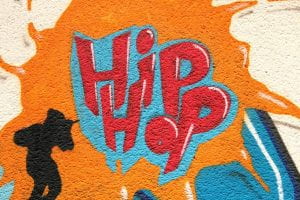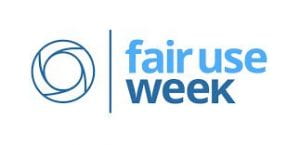Music sampling has been, and is, a critical fixture and feature of hip-hop. Hip-hop is an amalgamation of music, music mixing, dance, graphic art, and a specific clothing aesthetic. Lovers of hip-hop music and copyright have followed and studied the impact of copyright law on the genre, particularly how hip-hop musical artists (MCs) have engaged fair use.

Image by Benjamin Wiens from Pixabay
The Mixtape
Fair use, as stated in U.S. Copyright Law, 17 USC Section 107, is not an infringement of copyright, even if the use utilizes any of the exclusive rights of the copyright holder (as outlined in section 106 of U.S. Copyright Law). Fair use requires a four-part analysis: purpose of the use, nature of the work, amount used, and potential market harm. Section 107 mentions potential uses including: criticism, news reporting, teaching (including multiple copies for classroom use), scholarship, and research purposes.
Fair use is not limited to the specific listed categories. What is or is not definitively fair use, is decided by the courts. However, with notable exceptions, only a handful of cases around hip-hop music have been litigated and reached a fair use determination[1] (most disputes end before litigation commences or settle while winding through the courts). The most famous hip-hop case to reach the Supreme Court is Campbell v. Acuff-Rose Music, Inc., this case introduced “transformativeness” as a consideration in the first fair use factor: purpose. Miami-based hip-hop group 2 Live Crew sought a license to sample Roy Orbison’s Oh, Pretty Woman. The license was denied, but 2 Live Crew used the sample anyway, the rights holders for the original song sued. The case made its way to the high court that determined the use was parody that transformed the original, the amount used was necessary for the purpose of satire, and that the musical works had two different audiences, limiting market harm.
 |
 Most certainly two different audiences. |
In creative fields, artists borrow from and are inspired by each other as a regular part of the artistic process. If you are familiar with hip-hop music, you know that one of the foundational elements of the genre, which began in the 1970s, is sampling music from other genres, contemporary, and older music. Sampling of older music is often meant to allow listeners to reminisce, conjure historical references, or sometimes to satirize the music of older generations. Hip-hop began with extremely talented young people from marginalized, African-American, and Latino communities who could not afford to license music used in their unique creations. These MCs often used other music as backing tracks, background music to showcase their rapping skills. Mixtapes (actual tapes, remember those?) were created and distributed and used to fuel the culture. This creative and innovative musical form was the underlying beat for MC battles, breakdancing, and hip-hop nightclubs.

Funky Stuff by antony_mayfield is licensed under CC BY 2.0 license.
Some hip-hop artists, working with DJs and producers, would cobble different elements of multiple songs[2] to create the music underneath their rhymes and rhythms. The mixes and samples were innovative and the rhymes clever. This work helped build the genre through the 70s and well into the 90s (though rapping and hip-hop still exists, most would consider the mid-80s to around the mid-90s the golden age of this genre). Theoretically, many of these MCs should have been able to rely on fair use. Fair use is case specific, so it is difficult to generalize, but:
- Purpose: the use of the music was to provide backing tracks to rap, poems, and lyrics. Some uses were satirical. Some music was made available for free, but there were certainly commercial benefits.
- Nature: the underlying music was typically highly creative, published works.
- Amount: depending on the artist, as little as one second from multiple songs or an entire song could be used to fulfil the purpose
- Market: In most instances, as the court found in Campbell, the audiences for the new work and the original were not the same.
During the early years of hip-hop, the music moved from underground clubs and parties to the radio. As hip-hop music matured, more attention began to be paid to the third-party music samples included in the songs. The original music artists and record labels saw the lucrative nature of hip-hop in the resurgence of interest in their music. Increased interest was not enough though, the original artists and their labels sought compensation for the use of their music. As time passed and the genre grew, artists could afford to pay for and make original music but sampling remained a part of the culture. The record labels representing hip-hop artists started requiring any samples be cleared before an album could be released to lower the risk of an infringement lawsuit against the record label. As a result, some artists resorted to releasing two versions, one commercial and one as a “bootleg” containing samples that could not be cleared. Other artists opted to release only music with original music or cleared samples.[3] Approaches to clearing music rights differed among hip-hop pioneers. Some consistently cleared rights,[4] some felt their use was transformative, and still others fell somewhere in between clearing some music and continuing to explore using music that had not been (or could not be) cleared or clearing rights after production.
The Remix
There is no dispute that copyright law impacted how hip-hop evolved as a musical genre. Litigation and threats of litigation stopped artists from sampling music that would have created transformative music.[5] As hip-hop continued in the 90s, the desire to find songs that cleverly backed up the artist was still an important element of the culture. The commercial success of hip-hop made way for artists, producers, and DJs that had become successful enough to buy licenses to use samples. It eventually became part of the bravado of the time to brag about spending large sums of money to license music for sampling and remixing hip-hop music. The bragging was meant to show how powerful and prosperous some artists had become. But not all artists could afford to pay what, at times, could be exorbitant prices to include even relatively short samples of music. Sampling still occurs, but for represented artists, clearing the music is the only way to release music risk-free. In the digital age, some artists release uncleared music for free on a variety of websites, allowing innovation in music to remain.
Mashup v. Sampling
As hip-hop artists shied away from commercially releasing music with uncleared samples, the “mashup” developed. Mashups involve combining at least two songs into new music. Vocal tracks may also be overlayed over the works. While mainly hip-hop artists could not get away with unauthorized sampling, mash-up producers, DJs[6], and artists do not seem to have the same troubles. Dr. Mel Stanfill, during the 2019 Race + IP Conference, pondered the different reactions to sampling versus mashups. Sampling at its height was done mostly by marginalized hip-hop artists and in at least one case, sampling has been referred to as theft.[7] While mashup artists have yet to face challenges in court, the music seems to proceed without the response hip-hop artists faced. In fact, some mashup artists openly discuss their reliance on fair use to create their works. As MCs did (and do), mashup artists often release music for free online, without clearing rights, but many travel the world and fill concerts playing this uncleared music. The treatment of mashup DJs and hip-hop artists is noticeably different. It is difficult to determine whether the distinctions are due to the times, whether we have evolved into a culture of sharing, or whether the difference is in who does/did the sampling versus who is making mashups.
Who’s Got Next?
There may be some who say every artist, hip-hop and mashup artists included, should be required to license music, but this negates fair use which is a right available to everyone. That Campbell is the only case, seminal though it is, to address hip-hop and sampling to reach the Supreme Court is a shame. That many artists rarely, if ever, raise fair use when litigation happens or is threatened is concerning and frustrating.
As discussed on this Public Domain Day blog, Professor Kevin Greene suggests ways to help hip-hop artists. The pioneers of hip-hop need to be informed and educated that they may soon be able to exercise their rights under termination of transfer which allows artists and their estates to end what might have been predatory copyright transfer contracts and regain their copyright. Helping artists in this way could address the past stifling of their creative works during the golden age of hip-hop.
It is possible that the disparate treatment of mashup and hip-hop artists is due to the passage of time and changing attitudes about music and sharing. If this is the case, then hip-hop artists should be able to avoid the expensive licensing schemes that hinder creativity and innovation in the genre. Mashup artists seemingly rely heavily on fair use without challenge from the recording industry. The argument is not that they should receive the same treatment as hip-hop artists of the past (and present). The argument is that both types of works be treated as transformative works under fair use. Hip-hop artists should be allowed to rely on fair use as means to spur creativity and innovation in hip-hip without fear of litigation.
Recommended Resources:
COPYRIGHT CRIMINALS | Documentary Film | Independent Lens | PBS. https://www.pbs.org/independentlens/copyright-criminals/. Accessed 24 Feb. 2021.
Discover Music via Samples, Cover Songs and Remixes | WhoSampled. https://www.whosampled.com/. Accessed 24 Feb. 2021.
“More Than A Sample: 30 Years of Public Enemy’s It Takes A Nation Of Millions To Hold Us Back.” Mixdownmag, 27 Apr. 2018, https://mixdownmag.com.au/features/columns/more-than-a-sample-30-years-of-public-enemys-it-takes-a-nation-of-millions-to-hold-us-back/. Accessed 24 Feb. 2021.
Note. Not in Court ‘Cause I Stole a Beat: the Digital Music Sampling Debate’s Discourse on Race and Culture, and the Need for Test Case Litigation. University of Illinois Journal of Law, Technology and Policy 141, 2012. http://illinoisjltp.com/journal/wp-content/uploads/2013/10/Cox.pdf. Accessed 24 Feb. 2021.
_________________________
[1] Hip-hop artists did not invoke fair use as often as they should have. Falzone, Anthony. “Why Hasn’t Diddy Tried to Save Music Sampling?” Slate Magazine, 1 Nov. 2007, https://slate.com/news-and-politics/2007/11/why-hasn-t-diddy-tried-to-save-music-sampling.html.
[2] Using elements from thousands of songs was the signature style of Public Enemy. McLeod, Kembrew. “How Copyright Law Changed Hip Hop: An Interview with Public Enemy’s Chuck D and Hank Shocklee.” Little Village, 17 Oct. 2011, https://littlevillagemag.com/how-copyright-law-changed-hip-hop-an-interview-with-public-enemys-chuck-d-and-hank-shocklee/.
[3] Biz Markie, a few years after being ordered to pay damages to Gilbert O’Sullivan in Grand Upright Music, Ltd v. Warner Bros. Records Inc., for the unauthorized sampling O’Sullivan’s song “Alone Again (Naturally)”, released an album titled All Samples Cleared.
[4] The Beastie Boys began clearing rights after releasing Paul’s Boutique, which contained samples they did not or could not clear. Coleman, Jonny. “Meet The Woman Who Helps The Beastie Boys, Beck And The Avalanches Clear Their Samples.” LAist, https://laist.com/2016/10/19/pat_shannahan_detective_sampling_interview.php. Accessed 23 Feb. 2021.
[5] In Grand Upright Music, Ltd v. Warner Bros. Records Inc., the court ruling changed hip hop music, requiring that future music sampling be approved by the original rights holders. This was limited to the Southern District of NY, but the impact reverberated throughout the industry.
[6] Artists like Girl Talk and Danger Mouse among many others.
[7] In Grand Upright Music, the court stated the biblical verse “Thou Shall Not Steal” and ruled that sampling without permission constitutes copyright infringement.
By Sandra Aya Enimil, Copyright Librarian and Contracting Specialist, Yale Library
The information presented on the Conversations on Copyright blog is intended for educational and informational purposes only and should not be construed as legal advice. The Copyright Librarian and Contracting Specialist does not act as legal counsel to the university or any members of the university community.
In recognition of Fair Use Week, this blog is cross posted on the Copyright at Harvard Library Blog – http://blogs.harvard.edu/copyrightosc/


